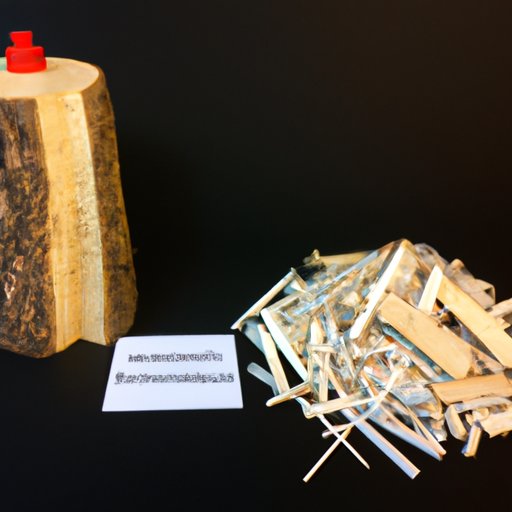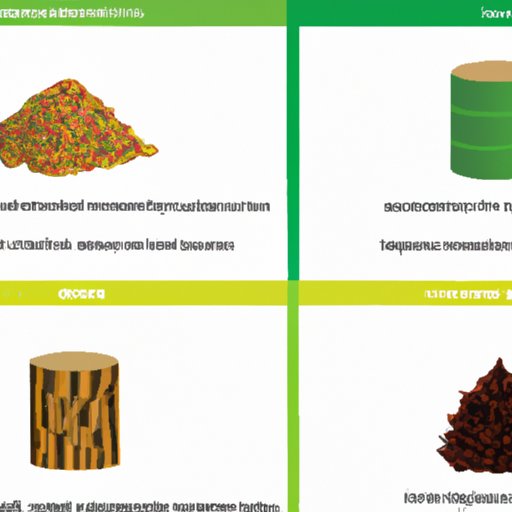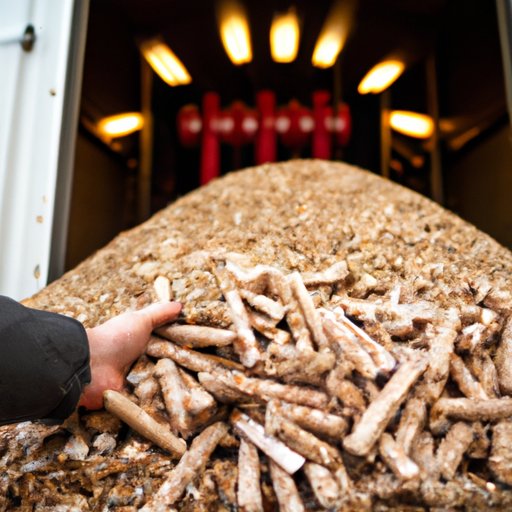Introduction
Biomass energy is a type of renewable energy that is derived from organic matter such as plants and animals. This energy can be used to generate electricity, heat buildings and homes, and even power vehicles. As the demand for renewable energy sources increases, so does the need to understand how biomass energy works and how it can be used more efficiently and sustainably.

Exploring the Science Behind Biomass Energy
Biomass energy is created when organic matter is broken down by bacteria or other organisms. During this process, the organic material releases energy in the form of heat. This heat can then be harnessed and used for various purposes, such as generating electricity or heating buildings and homes.
The process of breaking down organic matter is known as decomposition, and it is a natural process that occurs in nature. Decomposition is essential for maintaining the balance of nutrients in the environment. By using biomass energy, we are able to capture and use the energy released during this process.
There are several benefits to using biomass energy. It is a renewable energy source, meaning that it is not depleted when it is used. Additionally, biomass energy is carbon-neutral, meaning that it does not produce any additional carbon dioxide emissions. This makes it an attractive alternative to fossil fuels, which are responsible for the majority of greenhouse gas emissions.
Examining How Biomass Energy is Converted into Electricity
The process of converting biomass energy into electricity is known as “biomass conversion”. In order to convert biomass into electricity, there are several steps involved. First, the biomass must be collected and stored. This can be done by harvesting crops, collecting animal waste, or collecting wood and other organic materials.
Once the biomass has been collected, it is then processed into a fuel. This fuel is then fed into a combustion chamber where it is burned to release energy. The energy is then converted into electricity using a generator. The electricity is then ready to be used or stored for later use.
In order to make the most efficient use of biomass energy, several pieces of equipment are needed. These include a combustion chamber, a generator, a fuel storage tank, and a heat exchanger. All of these components are necessary for the conversion process to work properly.

The Different Types of Biomass Sources Used for Energy
Biomass energy can be derived from a variety of sources, including plants, animals, and waste products. Common sources of biomass energy include wood, crop residues, animal manure, and food waste. Each of these sources has its own advantages and disadvantages, so it is important to consider them carefully before deciding which source to use.
Biomass energy can be collected and stored in several ways. Wood and crop residues can be harvested and stored in large piles, while animal manure and food waste can be collected and stored in tanks or containers. In some cases, biomass energy can also be collected directly from the environment, such as from forests or wetlands.

How Biomass Energy is Used to Heat Homes and Buildings
Biomass energy can also be used to heat homes and buildings. In this process, the biomass is burned in a furnace or boiler, which then produces hot air or hot water. This hot air or water is then used to heat the building or home.
Using biomass energy to heat homes and buildings has several advantages. It is a renewable energy source, so it does not contribute to greenhouse gas emissions. Additionally, it is relatively inexpensive compared to other forms of energy. However, there are also some drawbacks to using biomass energy for heating, such as the need to store and collect the fuel. Additionally, burning biomass can emit pollutants, so proper ventilation is necessary.
Investigating the Environmental Impact of Biomass Energy
Although biomass energy is a renewable energy source, it still has an impact on the environment. When biomass is burned, it releases carbon dioxide, a greenhouse gas that contributes to climate change. Additionally, the harvesting and collection of biomass can have an impact on the environment, such as deforestation and soil erosion.
However, there are ways to use biomass energy more sustainably. For example, using more efficient systems to collect and store biomass can reduce the amount of energy needed to harvest and store it. Additionally, using biomass energy instead of fossil fuels can reduce greenhouse gas emissions.
Conclusion
Biomass energy is a renewable energy source that can be used to generate electricity, heat homes and buildings, and even power vehicles. The process of converting biomass energy into electricity involves several steps, including collecting and storing the biomass, processing it into a fuel, and burning it in a combustion chamber. There are several types of biomass sources available, each with their own advantages and disadvantages. Additionally, it is important to consider the environmental impacts of using biomass energy and how it can be used more sustainably.
Overall, biomass energy is a promising renewable energy source that can be used to reduce our reliance on fossil fuels and help protect the environment. With the right strategies and technologies, it can become an increasingly important part of our energy mix.
(Note: Is this article not meeting your expectations? Do you have knowledge or insights to share? Unlock new opportunities and expand your reach by joining our authors team. Click Registration to join us and share your expertise with our readers.)
